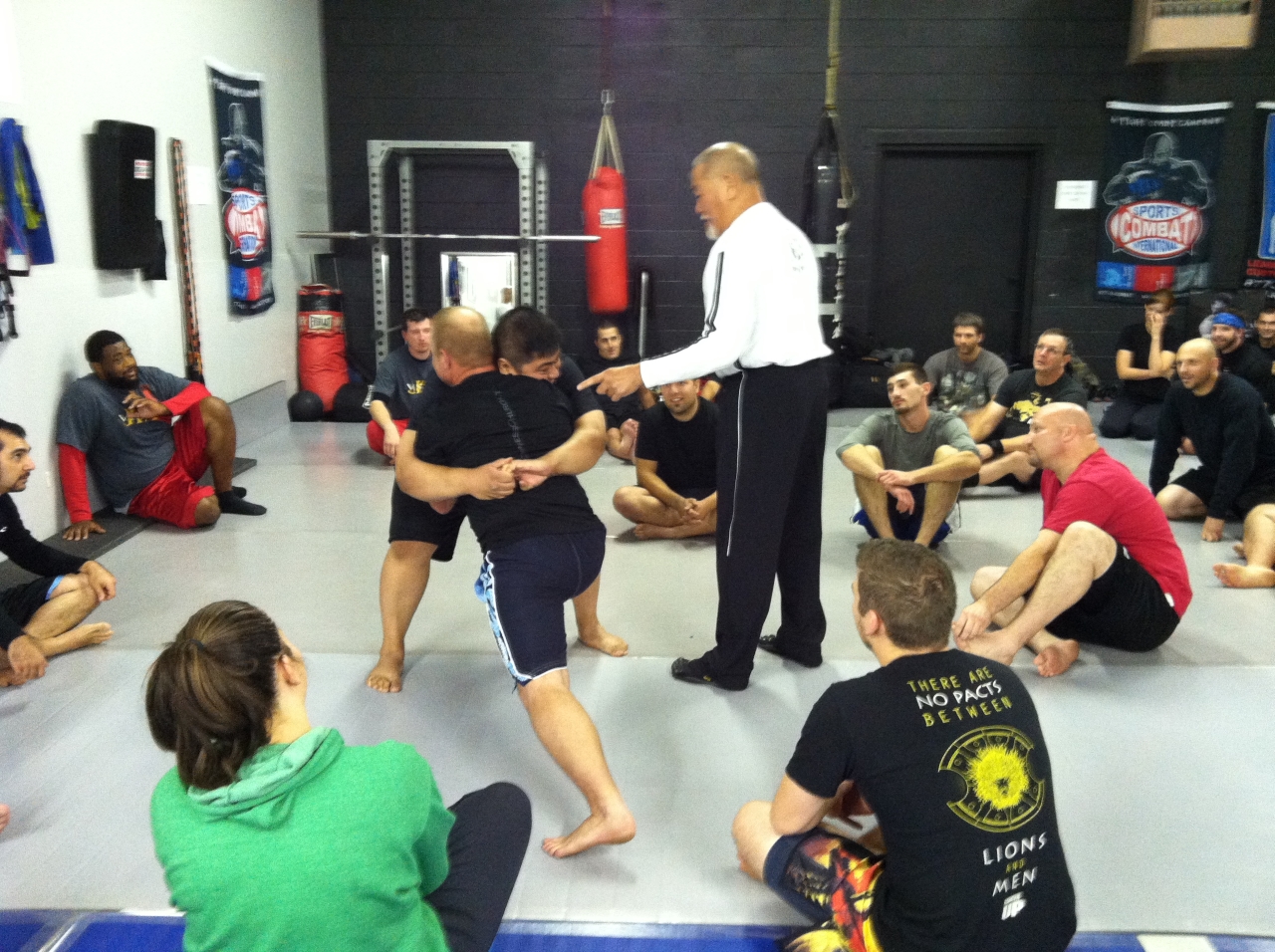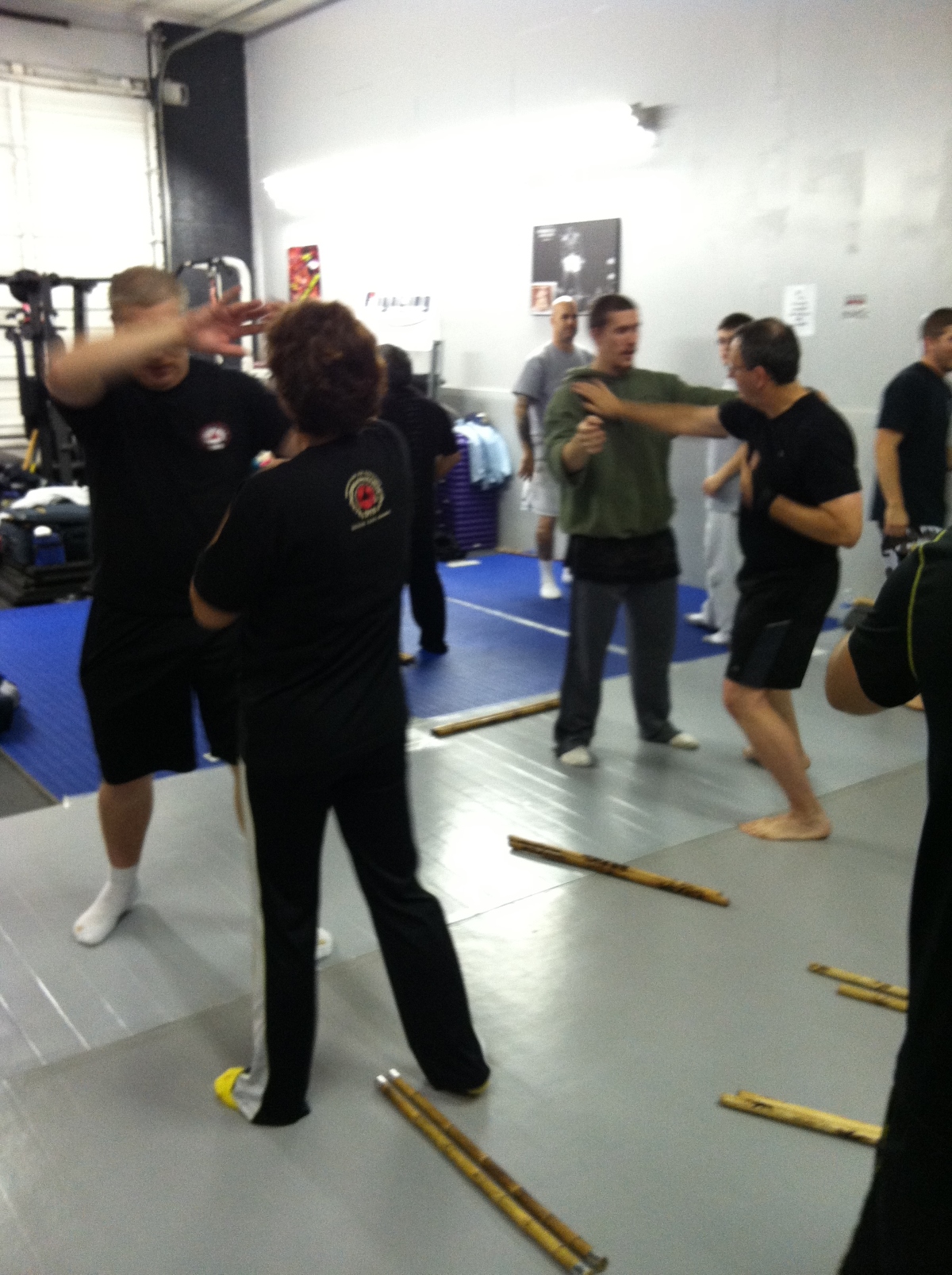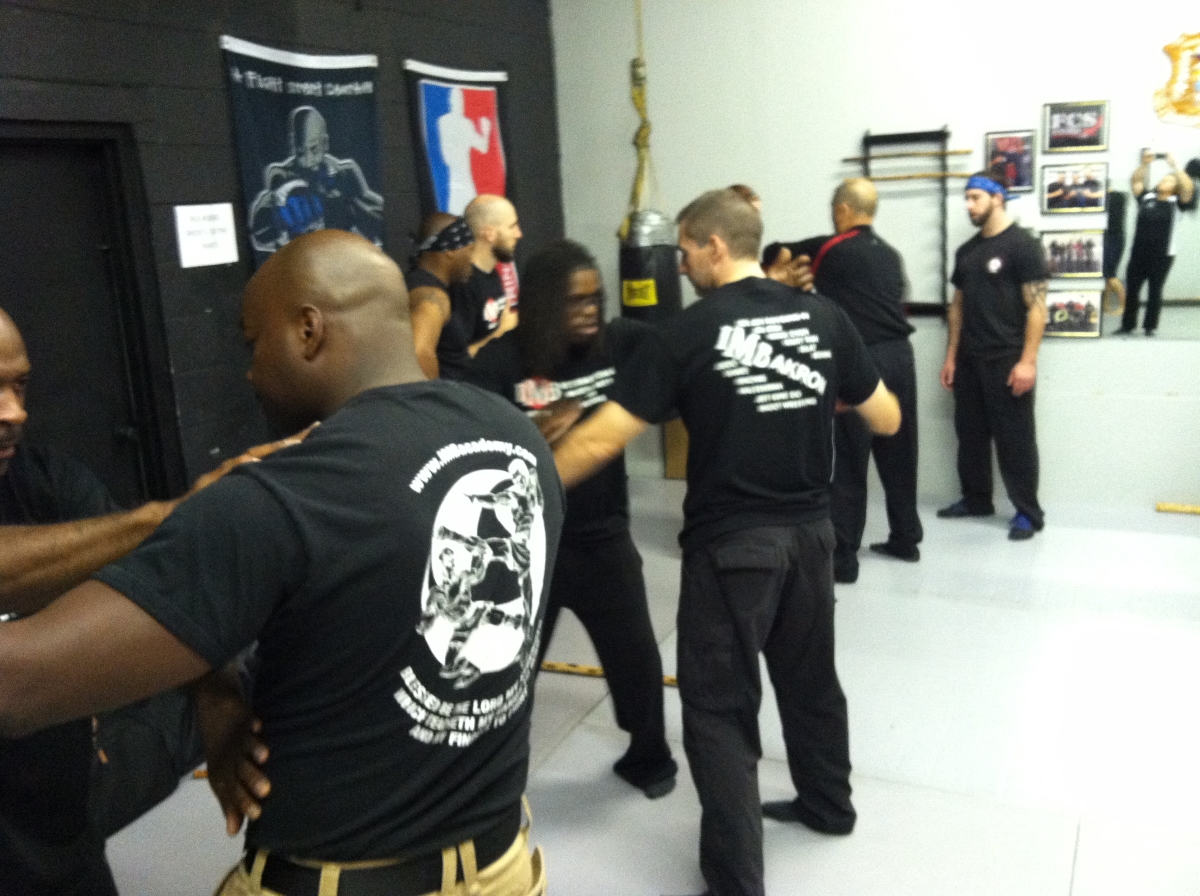I recently had the honor of training with my instructor, Richard Bustillo. He flew in to Ohio for a weekend seminar with 37 people in attendance. I’ve been training with him for 20 years and am proud to be an instructor under him. Every time I attend a seminar, coach’s clinic or instructor’s conference, one thing is for certain: It’s never the same. There’s always new material, new techniques or something modified for practical application that makes each training seminar unique. But the common threads connecting them are that the material must be able to be used in personal defense and must be practical.
Why does this matter to you? You’re probably thinking, “I’m not a martial artist, and I don’t want to start yelling funny things when I kick the air, spin around, punch my fists at nothing, and wind up with my feet far apart in a stance that looks like I’ve been riding a horse too long.” Well, I wouldn’t want to do that either (and I don’t). As I looked around this recent seminar, it occurred to me how many people might be missing the boat on what different types of really good training are out there. Just check out the class demographics: A third of attendees were LEOs, one firefighter, three nurses, five women (including me), all from Ohio, and an age range of 15 to 62 (most were in their 30s and 40s). That leads me to believe this must lend itself to some pretty decent cross-training between the armed and unarmed worlds.
One of my instructor’s favorite sayings is, “We are a fighting family.” What he means is that we are not showy and our techniques are not always the prettiest. We’re direct. We’re simple. We’re efficient. Are there over-the-top, complex and unnecessary training techniques in the firearms and martial arts industries? Of course. But if you’re looking for something to complement an armed personal defense plan, you will find it with this type of training.
IMB Academy
What kind of training is it? It’s through the IMB (International Martial Arts & Boxing) Academy. The training is based on ranges of attack (long, mid and ground), and includes Filipino weapons fighting. It’s also based on the concepts and principles of Lee Jun Fan Jeet Kune Do. Lee Jun Fan is Bruce Lee’s Chinese name and Jeet Kune Do is his personal way of martial arts and life. When dissected, JKD is nothing more than combat simplicity designed for each individual. My way of defining JKD is, “The discovery of self-expression in personal defense, stripping down traditional martial arts techniques into their simplest form of execution in the most efficient manner.” It’s just three words. There’s no talisman attached to them, just hard work, research and critical thinking.
I don’t believe the only kind of training for the gun world has to be bundled in a class labeled “Defensive Tactical Extreme Close Quarters Combat.” My Jeet Kune Do is different from that of other Jeet Kune Do instructors. I can’t speak for everyone who trains or instructs under the JKD flag, but if learning multiple ranges of attack and weapons training sounds good to you, this may be worth checking out. Most unarmed training stems from similar backgrounds: Western Boxing, Muay Thai, Jiu Jitsu, Greco-Roman Wrestling. Good stuff. We also add Silat, Filipino weapons (knife), Savat, Aikido and trapping. Are we masters of each form? No. But we are proficient enough to defend against them. We are taught that training in all ranges of attack makes us better prepared in the event we have to fight our way out of a situation.
Origins
What’s the origin of this type of training? My instructor, Richard Bustillo, learned this from his instructor, Bruce Lee, who was an innovative thinker in the 1960s when it came to martial arts training. And he caught a lot of hell for it. But Bruce Lee allowed for critical thinking and analysis of the fighting forms, and he sorted out what was useful from what was not, at least for him.
Let’s look at this from a practical standpoint. Does it matter who the “who” is, or are the concepts and principles of the “who” more important, in any industry? If you have an innovative thinker in the gun or unarmed defense industry with thought-provoking concepts and philosophy that could change the entire training of said industry, and those ideas make sense to you, why not try it? “Absorb what is useful, reject what is useless, add what is uniquely your own.” Bruce Lee coined that phrase, but other people are just as open in their thinking and being leaders in their own industry, gun or otherwise. We have to stop thinking of the “gun world” and the “martial arts world.” Both elements live in the “personal defense world.”
Class Selection Criteria
Raise your hand if you would attend this seminar: “Two-day (10 hours) hands-on Close Quarter Combat and blade training seminar with concepts used by law enforcement departments nationwide.” Now raise your hand if you would attend this one: “Two-day (10 hours) Martial Arts Seminar focusing on boxing, Muay Thai, Jiu Jitsu, and Filipino weapons training.” Guess what? It’s the same seminar. My point is that we in the personal defense industry have to better explain what we’re trying to accomplish and what we really have to offer. Are all martial arts seminars the same? No. How about all gun seminars? Of course not. But having your own criteria that meet the needs of basic unarmed or armed training is a good way to determine if a class is right for you. Here’s what I consider when looking at a class:
- Practical – Is the training simple, direct and effective?
- Comprehensible– Is it being taught in a way I will understand?
- Applicable – Does this training make sense when put into a realistic scenario?
If this is starting to sound interesting and you might like to take the next step into a class but hesitate to begin a new type of personal defense training, here’s how one person did it. Imagine a 30-year-old female fresh off a divorce moving away from close family. Her father gives her an old Charter Arms revolver wrapped in a towel and shoved into a shoe box and says, “Here. Go get some training so you can defend yourself.” Think she was pretty unnerved about the idea of developing new personal defense skills after so many years of unarmed training? You bet. But she did it, and ended up discovering a whole new side of personal defense that she’d never even considered. Oh. And that girl? She’s me (12 years ago).
Ongoing Training
Unarmed training is a great companion to armed defense. The IMB (International Martial Arts & Boxing) Academy is based in Torrance, California, but IMB affiliate schools are located in almost every state and worldwide. Other schools offer similar training, but this is the training under the JKD flag that I know. My suggestion is to do your own research and find out what’s right for you. But if you’re looking for a recommendation, the IMB Academy and its instructors (Full disclosure: That includes myself) are great places to start. If ongoing training doesn’t fit into your schedule, most IMB schools, including the main one in California, offer seminars on a consistent basis that will help you improve your unarmed defense game.
As for me, I’m continuing to explore my own way by taking the I.C.E. Training Defensive Firearms Coach class in 2015. Apparently listening to my Pop 12 years ago set me on a path to help more people develop their personal safety skills, both unarmed and armed. Thanks, Pop.




Wow its been a very long time since I heard the Lee Jun Fan Jeet Kune Do , Now I'm interested and seeing where this has gone. I was in my late teens and early 20s when I practiced. Now a lot older think I will look back into Jeet Kune Do.
I agree. I have studied Ninjutsu with both Sensei Bud Malmstrom and Stephen Hayes. Now I recently have added Systema as it closely resembles my Ninja Training.
Very good article. As an instructor in armed, unarmed, pepper spray and impact weapons I am convinced "objective based" training is more applicable than "technique based" training to the general public. People need to learn they truly can live unconquered. Thank you for your dedication to training.
greeting im glad to hear that you have accomplished professionalism in armed as unarmed in the self defence way of life I was trained by sifu cauliff who was trained under dan inosantos and im an nra pistol instructor always trying to improve myself you don't hear to often instructor proficient in both fields at least I haven't great job
For Minnesota, and I argue anywhere, Sifu Rick Faye is based out of Minneapolis and operates an elite level JKD/KALI school called The Minnesota Kali Group. You won't find whining, egos, or flash. You will find an incredibly gifted teacher with direct lines to Dan Inosanto, the late Larry Hartsell, and many others who have taken on the role Bruce created with his JKD concepts.